Nagra 
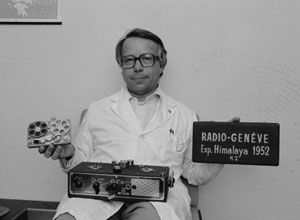 The Kudelski company was founded in 1951 by Mr. Stefan Kudelski. Born in Warsaw, Poland on February 27th 1929 where he completed
The Kudelski company was founded in 1951 by Mr. Stefan Kudelski. Born in Warsaw, Poland on February 27th 1929 where he completed
his primary schooling. In 1939 the declaration of war in Europe saw the Kudelski family flee to Hungary, then France and finally Switzerland in 1943.
In 1951, his prized invention, the “NAGRA” (meaning “will record” in Polish) takes a concrete form: a portable audio tape recorder with exceptional specifications, i.e. light, small, self-contained, portable and high quality.
In 1952 the first customers, Radio Lausanne and Radio Geneva placed official orders for the NAGRA I.
In May 1952, following the first international sound recording contest, some well-known reporters become interested in the NAGRA.
Stefan Kudelski then obtains a firm order for six NAGRA 1’s from Radio Luxembourg.
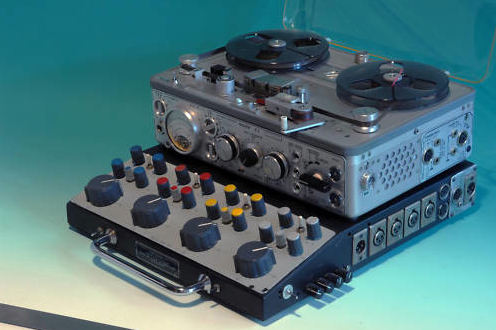
He leaves the EPUL where he was studying electrical engineering and devotes himself to the manufacture of his machines.
Assembly of such equipment meets many obstacles. Parts ordered elsewhere often arrive late, or do not meet the required specifications and the customers are always in a hurry. As a result, as many parts as possible for the new NAGRA II were to be made by the company.
Production of the NAGRA II began in 1953.
The NAGRA II is quite sophisticated, driven by a Gramophone spring from language laboratory equipment , and with excellent subjective and audio quality. The recorder is extremely sturdy; No advertising is needed, every day new reporters become acquainted with the machine and immediately try to buy one.
The manufacturing was done at a house in Prilly (West of Lausanne) where a small staff were employed by the Kudelski company, listed in the trade register of the city of Lausanne in 1953.
Improvements are in the making; towards the end of 1954 a printed circuit board is mounted in the NAGRA II and the microphone jacks are standardized. By the end of 1953 eleven employees work full-time.
By 1956 this number has risen to 17.
Although the NAGRA II has well served its purpose, it must be improved still further. A much better machine, with exceptional specifications in all respects has to be created; in 1957 this is done.
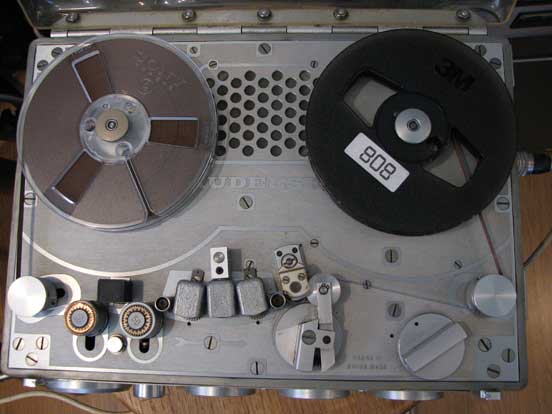
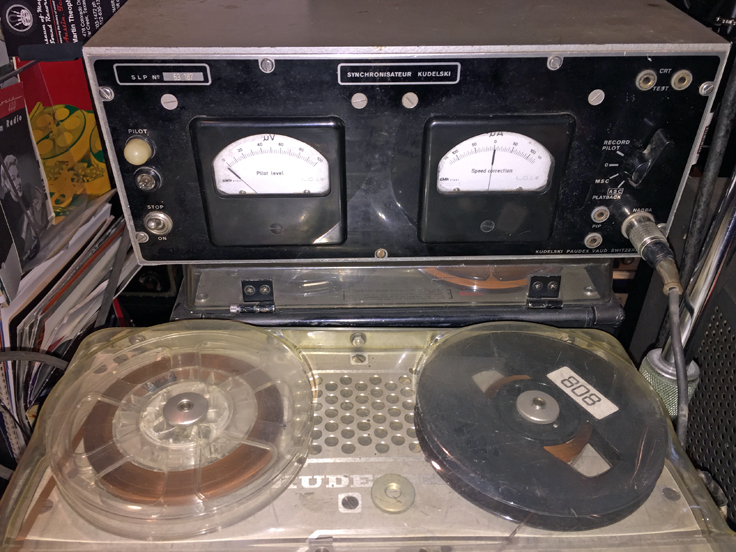 In 1958 the NAGRA III sees the light of day. It is a solid-state machine employing an electric motor with closed loop servo speed control. It is a fully transistorized machine with all the modules enclosed in metal cases. It is powered by conventional “D” type batteries. Moreover, it is equipped with a true peak meter called a “Modulometer” . Orders come flooding in and 240 NAGRA III machines are completed in 1958.
In 1958 the NAGRA III sees the light of day. It is a solid-state machine employing an electric motor with closed loop servo speed control. It is a fully transistorized machine with all the modules enclosed in metal cases. It is powered by conventional “D” type batteries. Moreover, it is equipped with a true peak meter called a “Modulometer” . Orders come flooding in and 240 NAGRA III machines are completed in 1958.
The NAGRA III was becoming a standard in many different industries. The system “PILOTTON” for lip synchronization of audio recordings with moving pictures, made good results possible, but a better system was needed.
Stefan Kudelski invented the “NEOPILOT” system, and the first NAGRA III machines equipped with the system were sold in 1962.
Commercial motion pictures were traditionally filmed using a dual system, that is picture on photographic film in the camera, and sound on a magnetic tape recorder. Neopilot was the standard synchronization system used to synchronize these separate elements until the late 1980s, when time code became the preferred standard. Nagra used a special, very narrow time code track in between the space of channel 1 and channel 2 on the stereo Nagra IV-S and T models.
 Success of the NAGRA III was huge, and delivery times were between 6 and 8 months. Production has to be increased continually.
Success of the NAGRA III was huge, and delivery times were between 6 and 8 months. Production has to be increased continually.
In 1964 office space and manufacturing space is rented in Renens, then in 1965 in Malley. At the end of the year a factory in Neuchâtel
is purchased. A vast piece of ground is purchased in Cheseaux-sur-Lausanne, for the construction of a dedicated factory. In 1967 the 10’000th NAGRA III is celebrated.
In early 1969 the NAGRA III is replaced by a more efficient machine: the NAGRA IV and 2510 machines are built in 1969.
In 1970 the NAGRA 4.2 was introduced to replace the NAGRA IV. It once again offered improvements on its predecessor with new features and better audio performance.
In the same year the IV-S was introduced. A Stereo machine destined towards the music industry, allowing musical performances to be captured in Stereo in a portable format.
The NAGRA SNS was also introduced in the same year. This half-track slow speed version of the SNN became a standard tool with law enforcement agencies around the globe.
In 1974 a new extra lightweight recorder, the IS, for broadcasters was introduced. The IS was followed in 1976 by the NAGRA-E which was a single microphone input, single speed recorder for reporters.
In 1977 the SNST a stereo version of the successful SNS machine for the security industry was also developed. 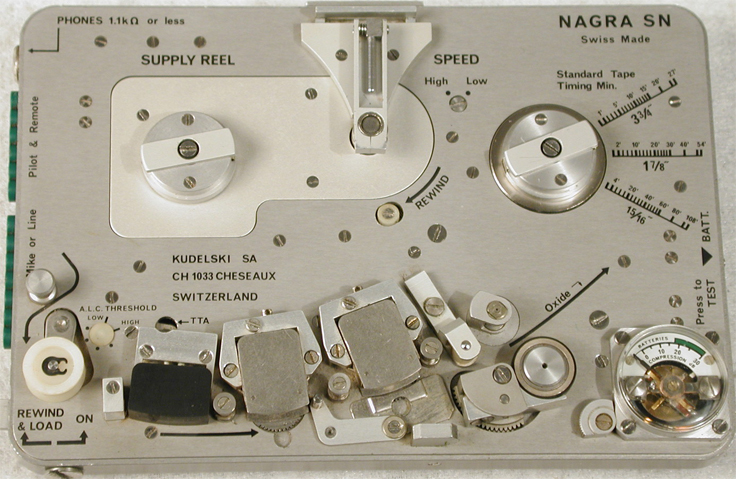
1977 also saw the introduction of the NAGRAFAX.
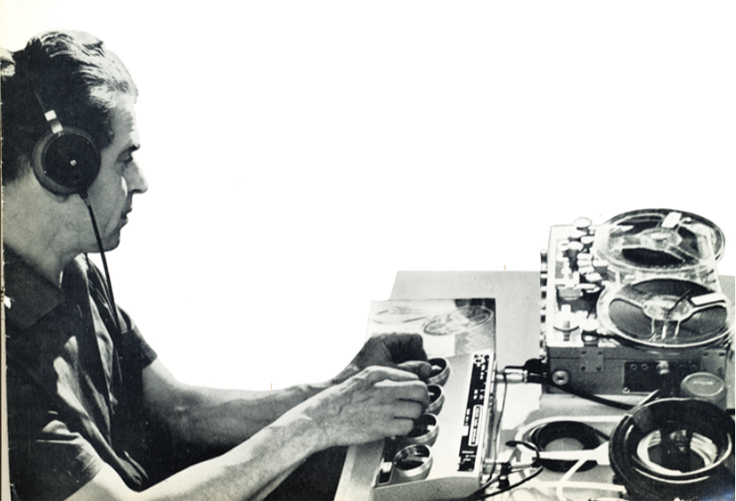 1978 saw the introduction of a sophisticated instrumentation recorder, the NAGRA TI
1978 saw the introduction of a sophisticated instrumentation recorder, the NAGRA TI
In 1979 the T-RVR (Remote Voice Recorder) was built. The capstan-less machine was designed as a logging recorder for radio broadcast transmission logging as well as telephone lines.
In 1983 the Kudelski company entered into a commercial joint venture with the AMPEX corporation of America, with the aim of building the worlds smallest, lightest professional portable C-format video recorder. The development and construction was entirely completed in Cheseaux. The resulting machine was baptized the AMPEX-NAGRA VPR-5. Using rotary head technology and the state-of-the art SMD (Surface Mount Devices), the project came to fruition and great leaps in technology were achieved.
AMPEX ordered 100 machines, which were to be used to cover the Mexico World Cup in 1986.
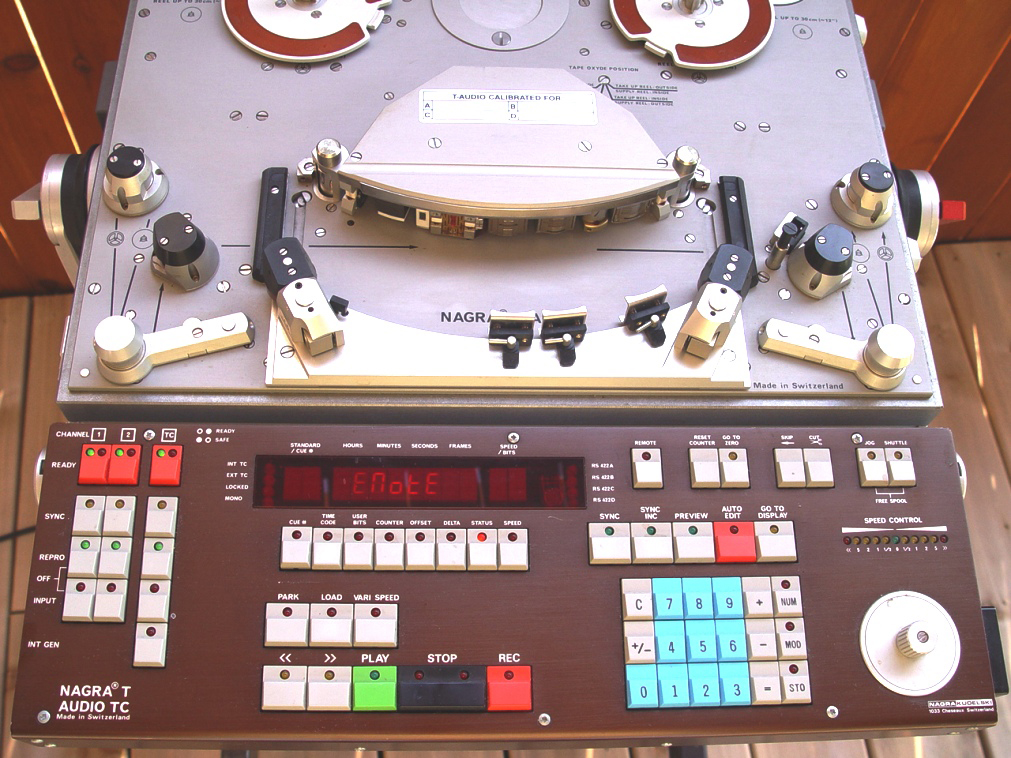 The JBR security recorder was introduced in 1984 with the aim of replacing the ageing SNST technology with a smaller, undetectable covert recorder for the security industry.
The JBR security recorder was introduced in 1984 with the aim of replacing the ageing SNST technology with a smaller, undetectable covert recorder for the security industry.
In 1984 the IV-S was adapted to accept the SMPTE / EBU time code system for motion picture synchronization previously only used in video recorders, and the IVS-TC was born. In 1985 the NAGRA T-AUDIO was also adapted to this new universal synchronization format. It became the most sophisticated transfer machine ever built and was to be found in post-production facilities all over the world.
1992 saw the return to the traditional location sound acquisition with the introduction of the company’s first digital audio recorder the NAGRA-D.
After those units Nagra went digital and tapeless.
Nagra Brochure pdf

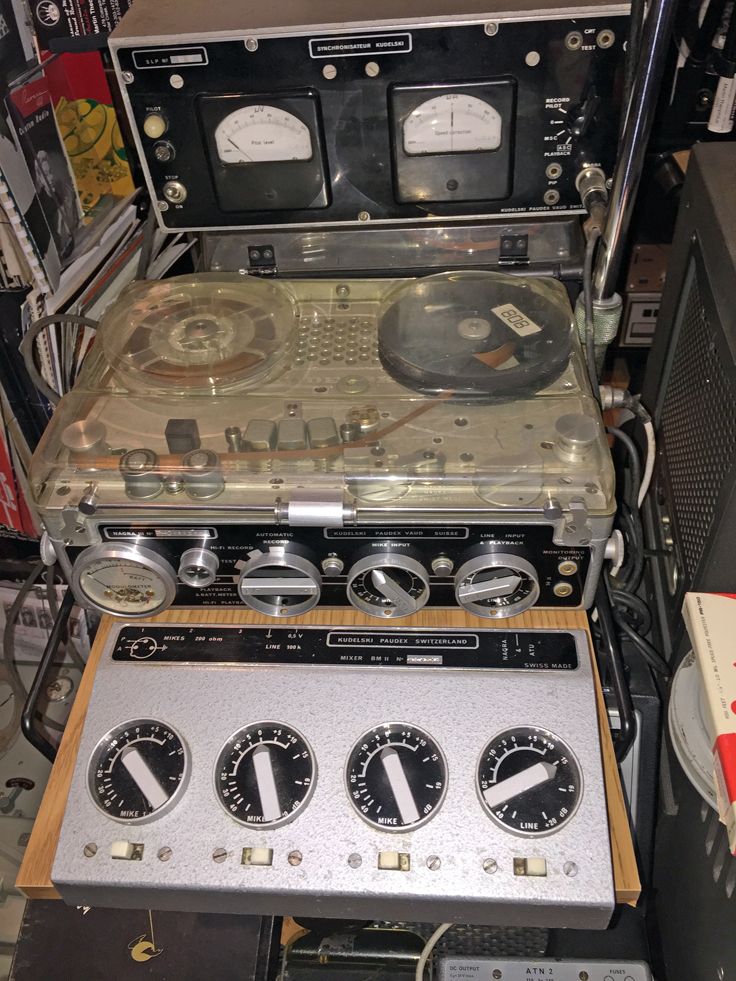

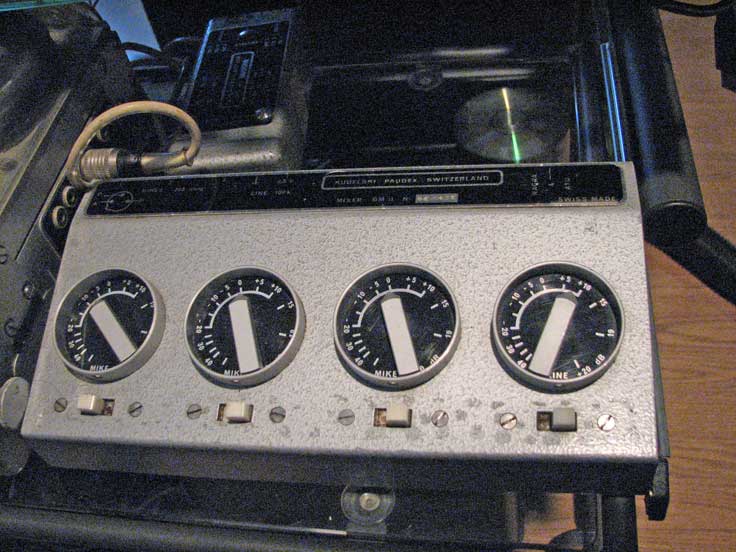
Nagra III reel to reel tape recorder with "pilot" sync, the Kudelski SA Synchronizer SLP, and the Nagra BM II mixer
in the Reel2ReelTexas.com & Museum of Magnetic Sound Recording vintage reel tape recorder recording collection
From NPR
While few outside the film and radio industries may recognize the name Stefan Kudelski, his Nagra recorder — meaning "will record" in Kudelski's native Polish — 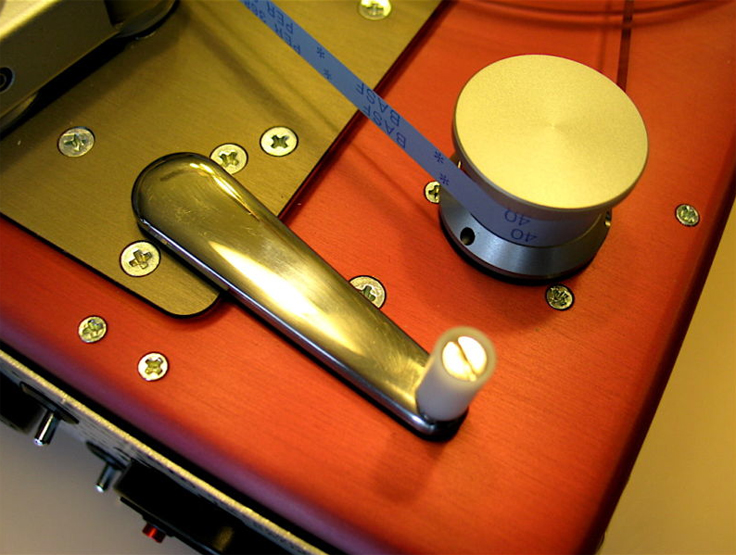 transformed the world of sound recording for radio, television and film.
transformed the world of sound recording for radio, television and film.
Kudelski, inventor of the first portable professional sound recorder, died Saturday in Switzerland at the age of 84, according to a statement from the Kudelski Group.
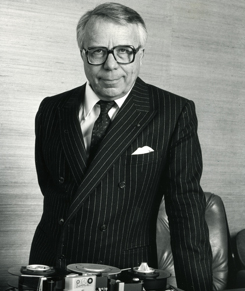 Before the Nagra, sound recording on movie sets required devices that "took several people to carry them around," says Randy Thom, director of sound design for Skywalker Sound in Marin County, Calif. "They typically had to be transported on a truck."
Before the Nagra, sound recording on movie sets required devices that "took several people to carry them around," says Randy Thom, director of sound design for Skywalker Sound in Marin County, Calif. "They typically had to be transported on a truck."
That made a Nagra set up — weighing in between 8 and 20 pounds, depending on accessories — profoundly freeing for filmmakers, particularly because the device reached the market just as cameras were shrinking.
"It was one of the tools that made the French New Wave possible, by allowing the young directors in the late 50s and early 60s ... to shoot a scene almost anywhere they could think of shooting one," Thom tells All Things Considered host Melissa Block.
And the Nagra was tough. "You could drop them and they would still run. They would run in very cold weather and they'd run in ... humid conditions," Thom says. "You could take them just about anywhere."
Born in Poland in 1929, Kudelski fled the Nazi occupation with his family in 1939, eventually ending up in Switzerland. He built his first tape recorder while a student at the Swiss Federal Institute of Technology in Lausanne.
He invented his Nagra device, which recorded on 1/4-inch magnetic tape, in 1951, and filled orders for his first customers, Radio Lausanne and Radio Geneva, in 1952, according to the Swiss company Nagra Audio.
Kudelski went on to win five Academy Awards and two Emmys for his contributions to sound engineering.
While digital audio recorders have largely overtaken tape in the film industry, sound designers still use them – particularly for recording very high-volume sounds like gunshots, Thom says. And no matter how small digital recorders become, Thoms says sound engineers still "get a bit of a starry eyed look" at the mention of the Nagra.
| |
| Nagra I 1951 |
| |
|
In 1952 the first customers, Radio Lausanne and Radio Geneva placed official orders for the NAGRA I |
|
| |
Taco Volta donated these photos of his Nagra I to MOMSR
Hi Martin, All I know about the Nagra is that it is a part of the museum collection “ musee de la radio” from Switzerland. My friend bought the museum in 2001. In the collection was also Nagra II, Nagra III and so on. Nagra fax with F4 -vlf radio receiver etc, etc. I sold a few during the years but my friend passed this year and i bought the collection from the heirs/ legacy. The Nagra II was also from Radio Geneva. A Marsi recorder from Radio Bern and i still have a Sony PT-5 from Radio Zürich. Happy new year to you also. Regards, Taco Vonk.
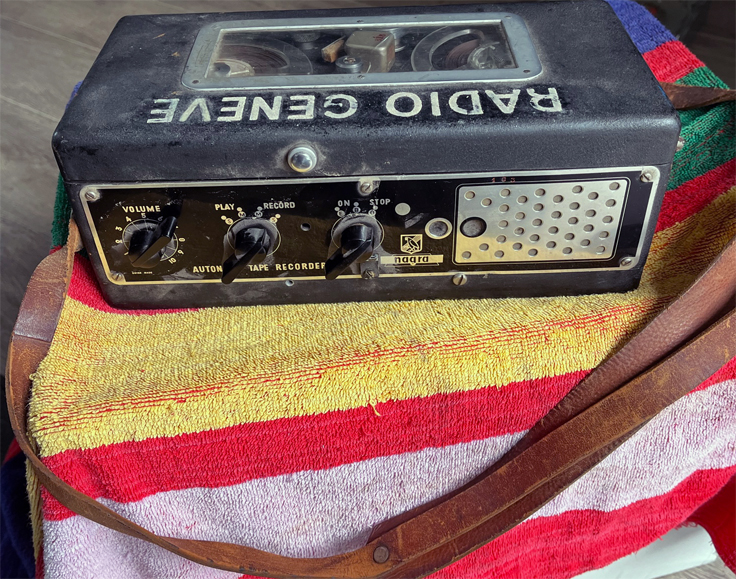 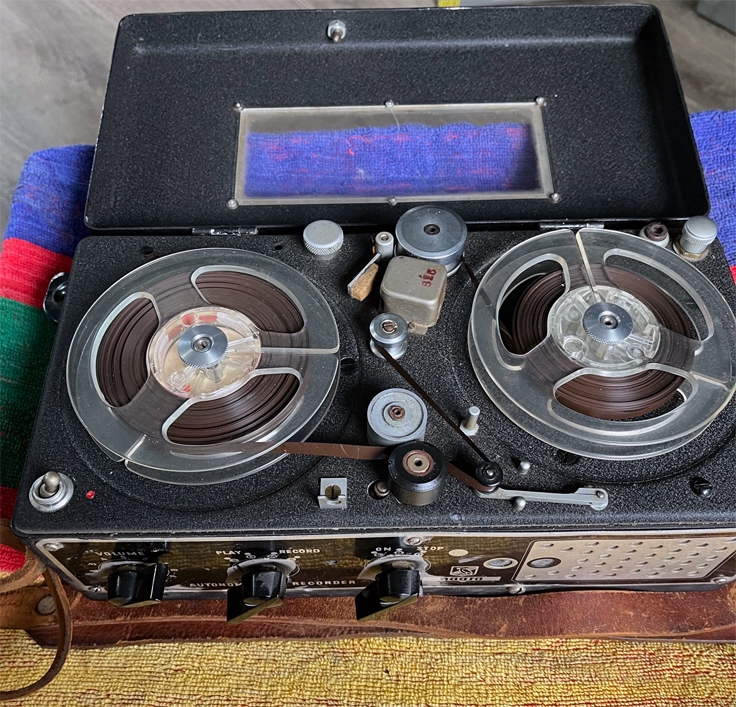 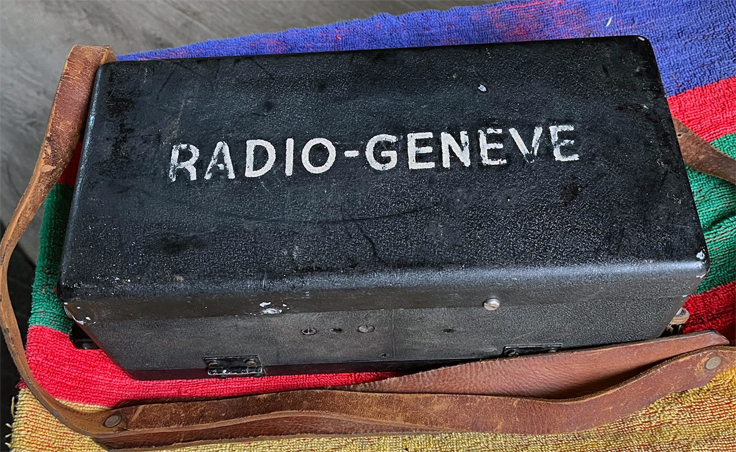
Here are some additional Nagra photos sent to us by Taco Vonk
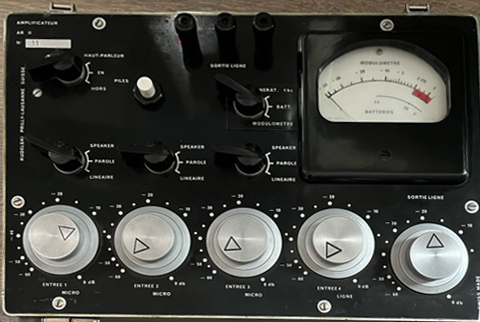  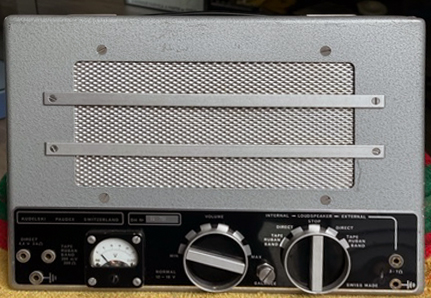  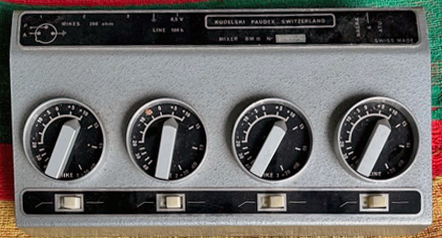
|
|
| |
| Nagra II 1953 |
|
|
The NAGRA II is quite sophisticated, driven by a Gramophone spring from language laboratory equipment , and with excellent subjective and audio quality.
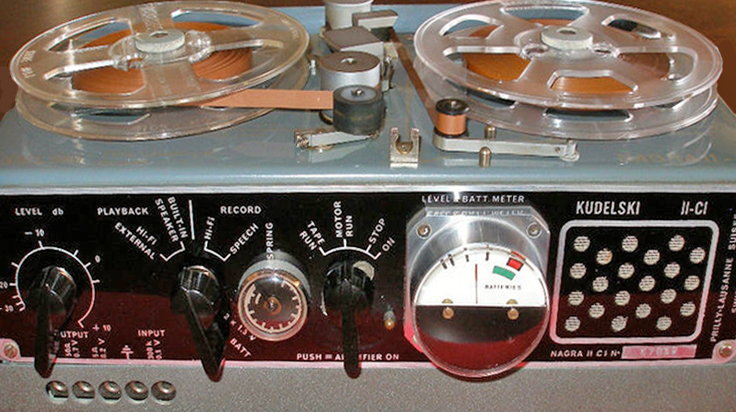
|
|
|
|
|
|
|
|
| |
NAGRA III 1958 • NAGRA III NP Neo Pilot 1962 |
In 1958 the NAGRA III sees the light of day. It is a solid-state machine employing an electric motor with closed loop servo speed control. It is a fully transistorized machine with all the modules enclosed in metal cases. It is powered by conventional “D” type batteries. Moreover, it is equipped with a true peak meter called a “Modulometer” . Orders come flooding in and 240 NAGRA III machines are completed in 1958. |
|
|
|
|
In 1967 the 10,000th NAGRA III is celebrated. |
Our museum Nagra III came from Lockheed |
|
|
| |
| NAGRA SN 1971 |
|
|
Using cassette width ⅛ th inch tape, the SN were predecessor to the Walkman introduced in the late '70s. Designed as a pocket recorder for cinema actors to carry, it was equipped with a pilot system for studio synchronization.
|
| |
| |
| NAGRA IV-S 1969 |
|
A Stereo machine destined towards the music industry, allowing musical performances to be captured in Stereo in a portable format. Using a revolutionary frequency modulated central track for commentary or pilot information. Th IV-S was in principal a stereophonic version of the monophonic 4.2. |
| |
| |
NAGRA E 1976 |
|
|
|
The NAGRA-E which was a single microphone input, single speed recorder for reporters. Aimed to suit developing countries and based on the same ¼” tape format as its predecessors, the NAGRA-E was fitted with many novel features not previously seen.
|
| |
| Nagra NTA 3 TCR |
|
|
|
The modular chassis of the TI made it a very flexible machine and was the corner-stone for the audio version the T-Audio, probably the most sophisticated studio machine available at the time which was introduced in 1981. Both the "TI" and "TA" models used a unique twin capstan tape transportation, allowing handling of master tapes with great care. The T-Audio was initially introduced as a broadcast machine in a two track configuration. This was followed by a traditional Stereo version destined towards the music industry, particularly to play back recordings made in-the-field on the NAGRA IV-S.
|
| |
| Nagra TA TC 1984 |
|
|
|
| |
|
|
|
|
|
|
|
|
|
|
|
|
|
|
|
In 1984 the IV-S was adapted to accept the SMPTE / EBU time code system for motion picture synchronization previously only used in video recorders, and the IVS-TC was born. In 1985 the NAGRA T-AUDIO was also adapted to this new universal synchronization format.
|
| |
| Nagra Playback System PS-1 JBR 1985 |
|
|
|
|
|
|
|
Although the dedicated playback unit, the PS-1 was not available until 1986, the JBR tapes were played back on a specially adapted STST recorder. The success of the JBR was immediate, and was openly accepted by law enforcement agencies, immigration and customs around the world.
|
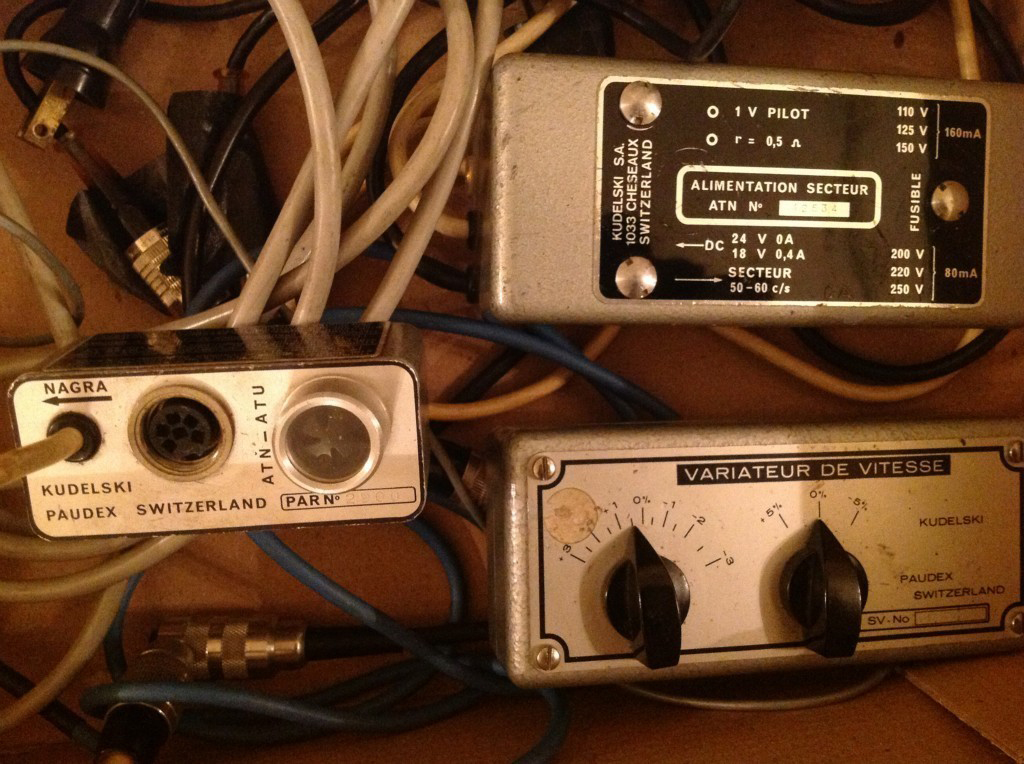 Nagra Accessories including a speed controller Nagra Accessories including a speed controller
|
| |
We appreciate all photos sent to our museum. We hope to successfully preserve the sound recording history. If we have not credited a photo, we do not know its origin if it was not taken by the contributor. Please let us know if a photo on our site belongs to you and is not credited. We will be happy to give you credit, or remove it if you so choose. Please note: None of the recorders are for sale on our Museum site.

posted by Jurg Schopper |
|
|
| |
|
|
| |
|
|
|
| |

